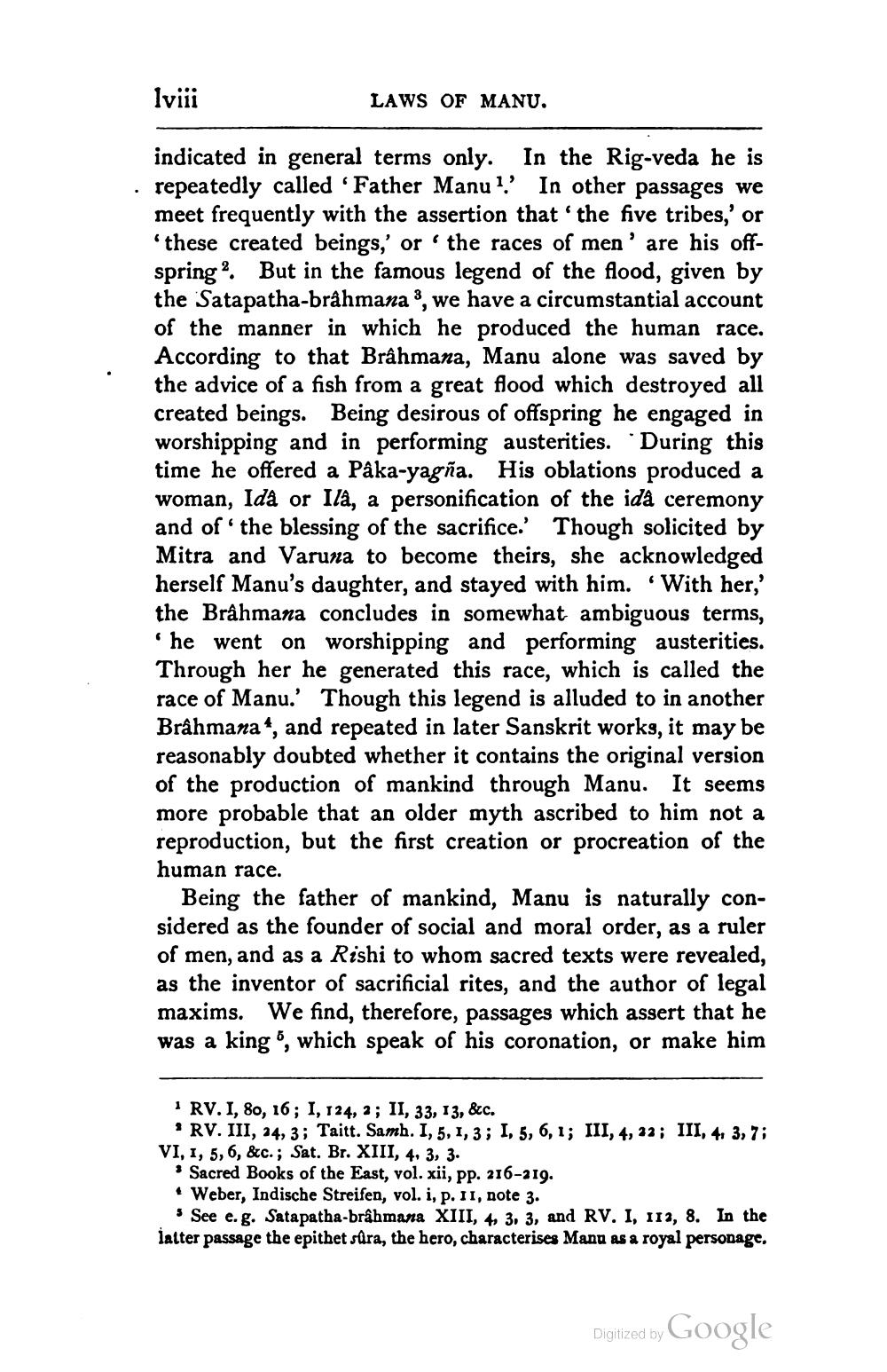________________
Iviii
LAWS OF MANU.
indicated in general terms only. In the Rig-veda he is repeatedly called 'Father Manu?' In other passages we meet frequently with the assertion that the five tribes,' or
these created beings,' or 'the races of men' are his offspring 2. But in the famous legend of the flood, given by the Satapatha-brâhmana , we have a circumstantial account of the manner in which he produced the human race. According to that Brâhmana, Manu alone was saved by the advice of a fish from a great flood which destroyed all created beings. Being desirous of offspring he engaged in worshipping and in performing austerities. During this time he offered a Pâka-yagña. His oblations produced a woman, Idà or Ilà, a personification of the idâ ceremony and of the blessing of the sacrifice. Though solicited by Mitra and Varuna to become theirs, she acknowledged herself Manu's daughter, and stayed with him. With her,' the Brahmana concludes in somewhat ambiguous terms, ' he went on worshipping and performing austerities. Through her he generated this race, which is called the race of Manu.' Though this legend is alluded to in another Brâhmana“, and repeated in later Sanskrit works, it may be reasonably doubted whether it contains the original version of the production of mankind through Manu. It seems more probable that an older myth ascribed to him not a reproduction, but the first creation or procreation of the human race.
Being the father of mankind, Manu is naturally considered as the founder of social and moral order, as a ruler of men, and as a Rishi to whom sacred texts were revealed, as the inventor of sacrificial rites, and the author of legal maxims. We find, therefore, passages which assert that he was a king, which speak of his coronation, or make him
RV. I, 80, 16; I, 124, 2; II, 33, 13, &c. * RV. III, 24, 3; Taitt. Samh. 1, 5, 1, 3; I, 5, 6, 1; III, 4, 12; III, 4, 3, 7; VI, 1, 5, 6, &c.; Sat. Br. XIII, 4, 3, 3.
* Sacred Books of the East, vol. xii, pp. 216-219. • Weber, Indische Streifen, vol. i, p. 11, note 3.
See e.g. Satapatha-brahmana XIII, 4, 3, 3, and RV. I, 112, 8. In the latter passage the epithet süra, the hero, characterises Mand as a royal personage,
Digitized by Google




